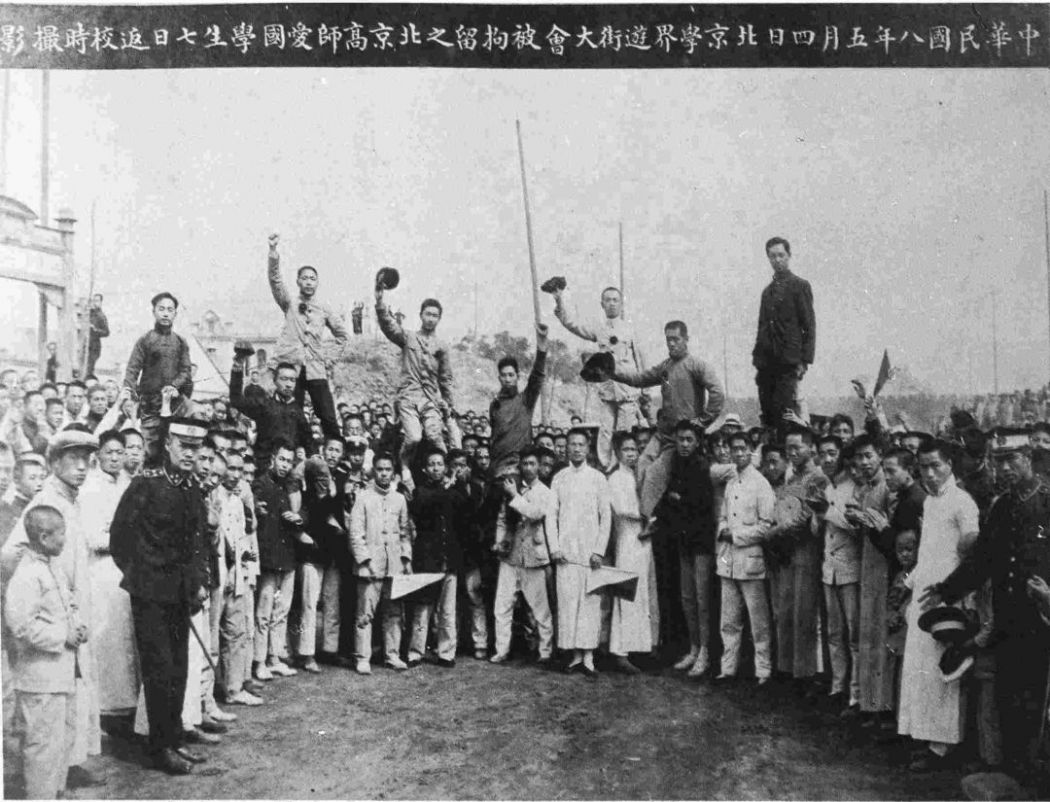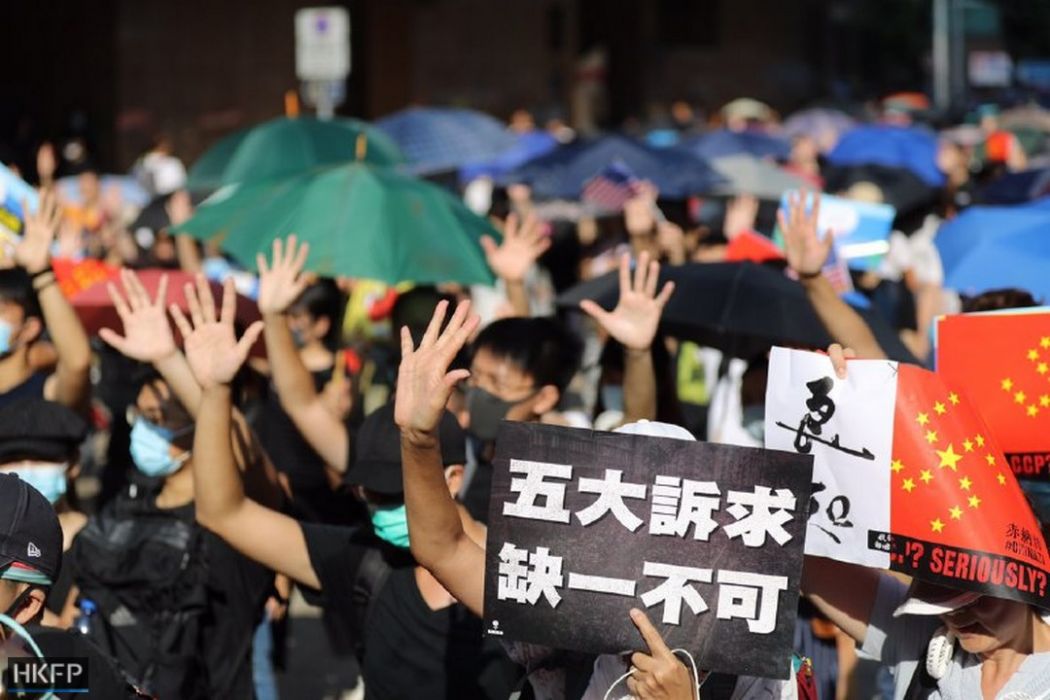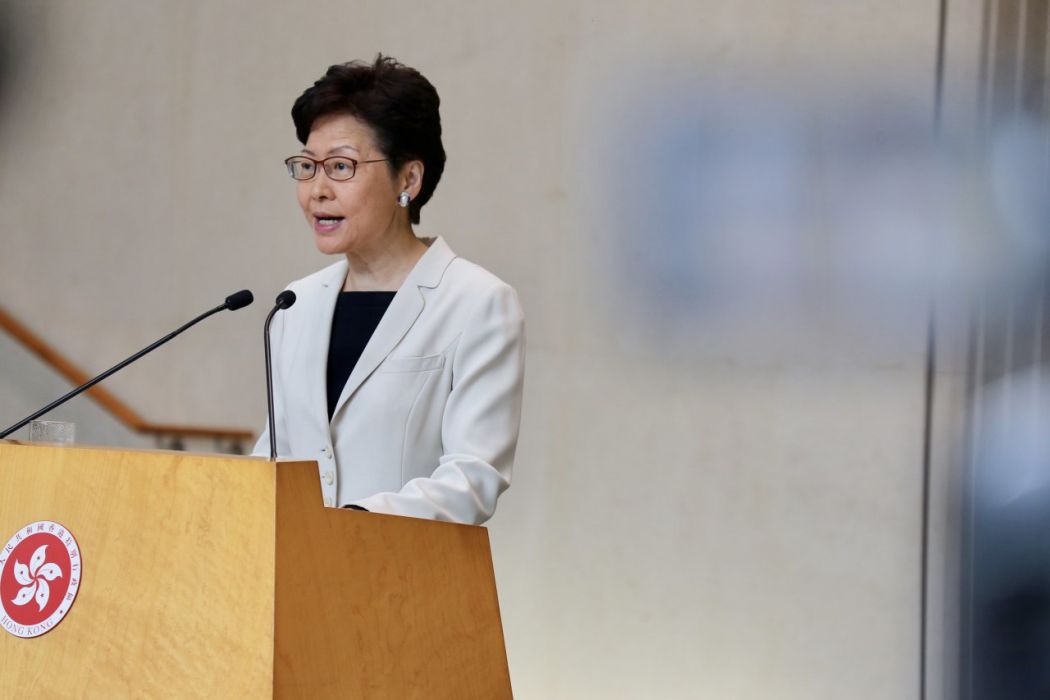By Eric Tindall
On May 4 1919, several thousand students gathered in front of the Gate of Heavenly Peace in Beijing. Their demand? That formerly-German territories in Shandong be returned to China instead of handed over to Japan as the Treaty of Versailles stipulated.
The demonstration, as well as the weeks of ensuing protests, publications and intellectualism that followed provoked a political awakening in China known as the May 4th Movement.

The May 4th Movement may have stemmed from anti-imperialist anger, but it was directed against a government that was seen as too weak to stand up to foreign domination, and whose corrupt and self-aggrandising officials were more concerned about maintaining their own political position than listening to the demands of their people, even if such disregard meant bowing down to more powerful outsiders.
The movement reflected a desire for freedom, self-determination and Western-style democracy, and was an expression of frustration with the slow pace of political reform. Protesters called on China to move away from the China of the past – and its Confucian, bureaucratic and authoritarian governing style – and closer to the modern, independent, and developed democracies of the West.
Today, the movement is recognised for spawning and strengthening the idea of Chinese nationalism and independence from foreign domination.
But back in 1919, things looked bleak. The angry students drafted a list of Five Demands and marched to the residential district of government officials to present them. When they were rebuffed, they set fire to one house and attacked the resident of another. The authorities cracked down violently with arrests and beatings of their own, later killing one demonstrator.

Protesters responded with more demonstrations, strikes and boycotts. In the following weeks, other segments of society joined in and protests soon spread throughout China. Each one was met with more arrests, suppression and violence. After one month, an estimated total of 5,000 had been detained.
Parallels to the current demonstrations in Hong Kong are striking. The May 4th Movement was sparked by a government’s decision to grant areas of Chinese territory to the Japanese, bending to the will of outside actors. In Hong Kong, it was the government’s introduction of the controversial extradition bill – spearheaded by Chief Executive Carrie Lam but commonly seen to be at the behest of officials in Beijing – that triggered the massive protests.
Like in the May 4th Movement, the government has responded violently, injuring, by its own admission, an estimated 800 protestors and arresting even more.
Police violence has further inflamed the protests to the extent that they are no longer about the original extradition bill. Now the outrage is focused on the government’s apparent unwillingness to listen to its people while simultaneously doing everything it can to maintain complete obedience to a higher authority.

Demonstrators have responded with their own list of five demands, which include, among others, the granting of amnesty to all protestors as well as the implementation of universal suffrage, goals that the leaders of the May 4th Movement also shared.
The resulting anger and disillusionment have also encouraged a broader reexamination of Hong Kong’s precarious position in China. Similar to the insurgent nationalism and desire for independence that characterised the May 4th Movement, the demonstrations of the last four months have prompted a call for increased autonomy from Beijing, and for a rejection of the values, ideas and laws of the Mainland, which many see as incompatible with the territory and perpetuating the survival of an outdated and oppressive regime.
Instead, most protesters want the city to draw closer to the liberal democracies of the world, a phenomenon that also closely parallels the May 4th Movement.
However, where the two events differ is in the ultimate response by the authorities. On June 28, after nearly two months of strikes, boycotts and demonstrations, the Chinese government acceded to the wishes of protesters and refused to sign the Treaty of Versailles. They also released all of those who had been detained and dismissed three officials who were seen as subservient to the Japanese, showing that at least some were being held accountable.

While Lam first suspended, and then withdrew, the extradition bill, the Hong Kong government has failed to hold anyone accountable. It has consistently refused to open any kind of investigation into police violence all while overseeing a police force that seems to become increasingly violent by the day.
Nobody has resigned nor is it clear that anybody has been punished. All remain in their positions and are seen by many Hong Kongers to be nothing more than loyal servants to authorities in Beijing, over 2,000 kilometres away. Lam’s recent decision to use emergency powers for the first time in 52 years reflects the government’s uncompromising stance.
The May 4th Movement ultimately succeeded because the Chinese government was brave enough to listen to its people and say no the strong arms of the Japanese and Western powers.
Japan eventually took control of Shandong anyway, but by 1928 China was unified under Chiang Kai-Shek, a unification made possible in part by the nationalism that was born out of those eight weeks in 1919. Additionally, many of the leaders of the movement would go on to join the upstart Chinese Communist Party, helping lay the foundation for today’s China.

The May 4th Movement is now, perhaps ironically, taught and celebrated by the CCP as a foundational event in Chinese history, even though state media frequently criticises the Hong Kong protestors for many of the exact same actions and motives.
The future of Hong Kong can be promising too, but only if Lam and the rest of her government heed the lessons of 1919 and take the first steps to listen to the territory’s eight million citizens, draw a line between it and Beijing, and reassert its authority under the One Country Two Systems Framework.
Only then can officials demonstrate that they have their people’s best interests at heart and only then can the unrest be quelled, trust established and a city rescued from the brink.
Eric Tindall is an avid reader of Chinese history. He currently teaches in Hong Kong.
